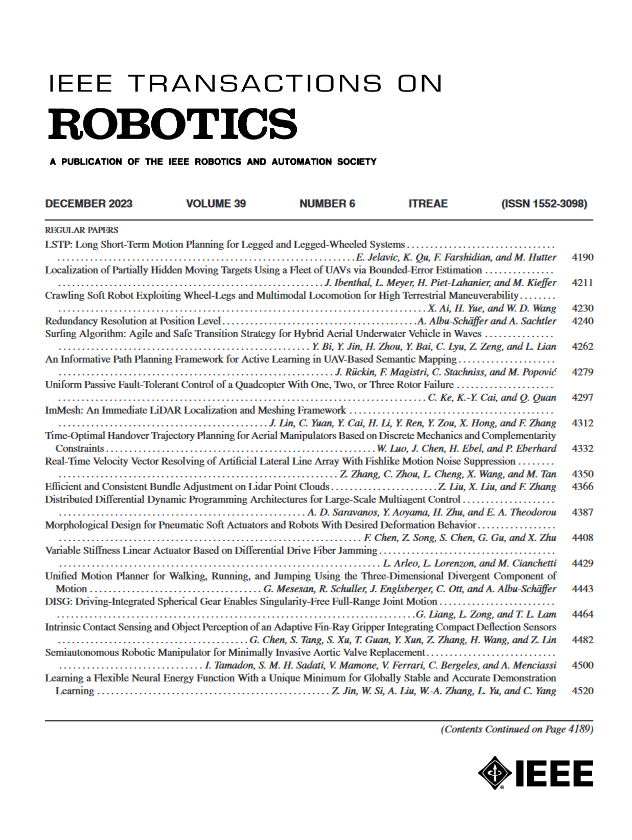Noncontact Manipulator for Sedimented/Floating Objects via Laser-Induced Thermocapillary Convection
IF 9.4
1区 计算机科学
Q1 ROBOTICS
引用次数: 0
Abstract
Noncontact manipulation in liquid environments holds significant applications in micro/nanofluidics, microassembly, micromanufacturing, and microrobotics. Achieving compatibility in manipulating both sedimented and floating objects, as well as independently and synergistically manipulating multiple targets, remains a significant challenge. Here, a noncontact manipulator is developed for both sedimented and floating objects using laser-induced thermocapillary convection. Various strategies are proposed based on the distinct responses of sedimented and floating objects. Predefined scanning and “checkpoint” methods facilitate accurate movements of individual and multiple particles, respectively. Ultrafast programmed scanning and laser multiplexing enable independent manipulation and high-throughput ordered distribution of multiple particles. At the air–liquid interface, “laser cage” and “laser wall” are proposed to serve as effective tools for manipulating floating objects, especially with vision-based closed-loop control. Methods and strategies here do not rely on specific features of targets, solvents, and substrates. Multiple examples, including complex path replication, maze traversal, and precise assembly and disassembly, are demonstrated to validate the feasibility of this manipulator. This work provides a versatile platform and a novel methodology for noncontact manipulation in liquid.求助全文
约1分钟内获得全文
求助全文
来源期刊

IEEE Transactions on Robotics
工程技术-机器人学
CiteScore
14.90
自引率
5.10%
发文量
259
审稿时长
6.0 months
期刊介绍:
The IEEE Transactions on Robotics (T-RO) is dedicated to publishing fundamental papers covering all facets of robotics, drawing on interdisciplinary approaches from computer science, control systems, electrical engineering, mathematics, mechanical engineering, and beyond. From industrial applications to service and personal assistants, surgical operations to space, underwater, and remote exploration, robots and intelligent machines play pivotal roles across various domains, including entertainment, safety, search and rescue, military applications, agriculture, and intelligent vehicles.
Special emphasis is placed on intelligent machines and systems designed for unstructured environments, where a significant portion of the environment remains unknown and beyond direct sensing or control.
 求助内容:
求助内容: 应助结果提醒方式:
应助结果提醒方式:


